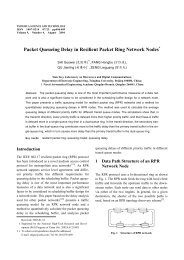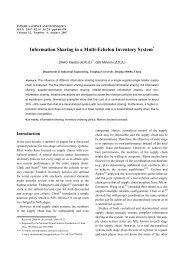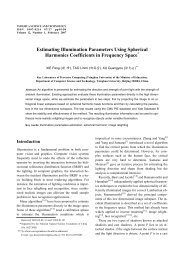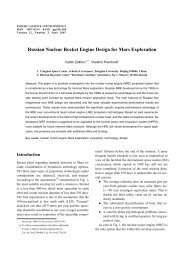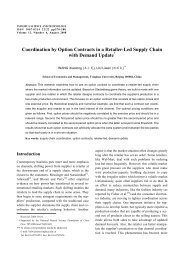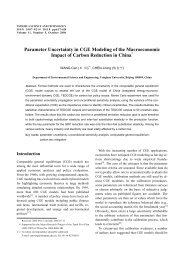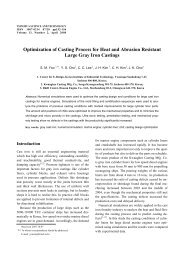Sample Paper_Submission.pdf
Sample Paper_Submission.pdf
Sample Paper_Submission.pdf
Create successful ePaper yourself
Turn your PDF publications into a flip-book with our unique Google optimized e-Paper software.
320<br />
321<br />
322<br />
323<br />
324<br />
325<br />
326<br />
327<br />
328<br />
329<br />
330<br />
331<br />
332<br />
333<br />
334<br />
335<br />
336<br />
337<br />
338<br />
339<br />
340<br />
341<br />
342<br />
343<br />
344<br />
345<br />
346<br />
347<br />
348<br />
allelochemicals of Phragmites communis reduced the activities of superoxide dismutase (SOD) and<br />
peroxidase (POD), to decline the ability to remove reactive oxygen species, and disorder the cell redox<br />
state, to cause cell death[45]. The exudates of Eichhornia crassipes stressed the SOD activity of<br />
Scenedesmus from initial increase to gradual decrease, but increased POD activity all through[48].<br />
4 Possible application ways for algal-bloom control using allelopathy<br />
The potential ways for utilizing allelochemicals of aquatic macrophytes contain transplanting live plants,<br />
delivering harvested and dried plants, extracting allelochemicals from plants and synthesizing<br />
allelochemicals with natural structures.<br />
Transplanting live plants is suitable for small water bodies like landscape ponds. It can satisfy the<br />
requirement of algae inhibition and beautify the environment. The management of aquatic plants is also<br />
easy because of the small area. However, transplanting live plants costs a lot of time and labor and the<br />
plants are affected easily and greatly by season change. The method is effective slow and timely poor. So<br />
the plants may not be able to suffer from algal bloom. On the other hand it is not suitable for large water<br />
area because the plants may reproduce excessively.<br />
In the decay process, the plants may release allelochemicals and provide habitat places for fish, shrimp,<br />
and aquatic organisms. However, this method spoils the beauty of environment. And the release of<br />
nutrients in the process could cause the secondary pollution and trigger other environmental problems.<br />
Extracting allelochemicals from plants and applying them into water bodies is a promising method<br />
because of its easy control and quick effect. Allelochemicals from macrophytes are natural algicides. Rice<br />
claimed that allelochemicals might replace the man-made herbicides, at least could greatly reduce the<br />
amount of herbicide usage[27]. Therefore, extraction, separation, identification and synthesis of<br />
allelochemicals can provide new algicides for algal-bloom control. Combination with other recycle<br />
methods, such as papermaking, methane fermentation system, etc can solve the problem of residue<br />
disposal.<br />
Synthetic allelochemicals can make up biomass shortage of aquatic plants. And the efficiency of<br />
synthetic allelochemicals can be improved during the synthesizing procedure to satisfy the requirement of<br />
algal-bloom control. Therefore, the synthetic method will become a future development direction.<br />
- 16 -



